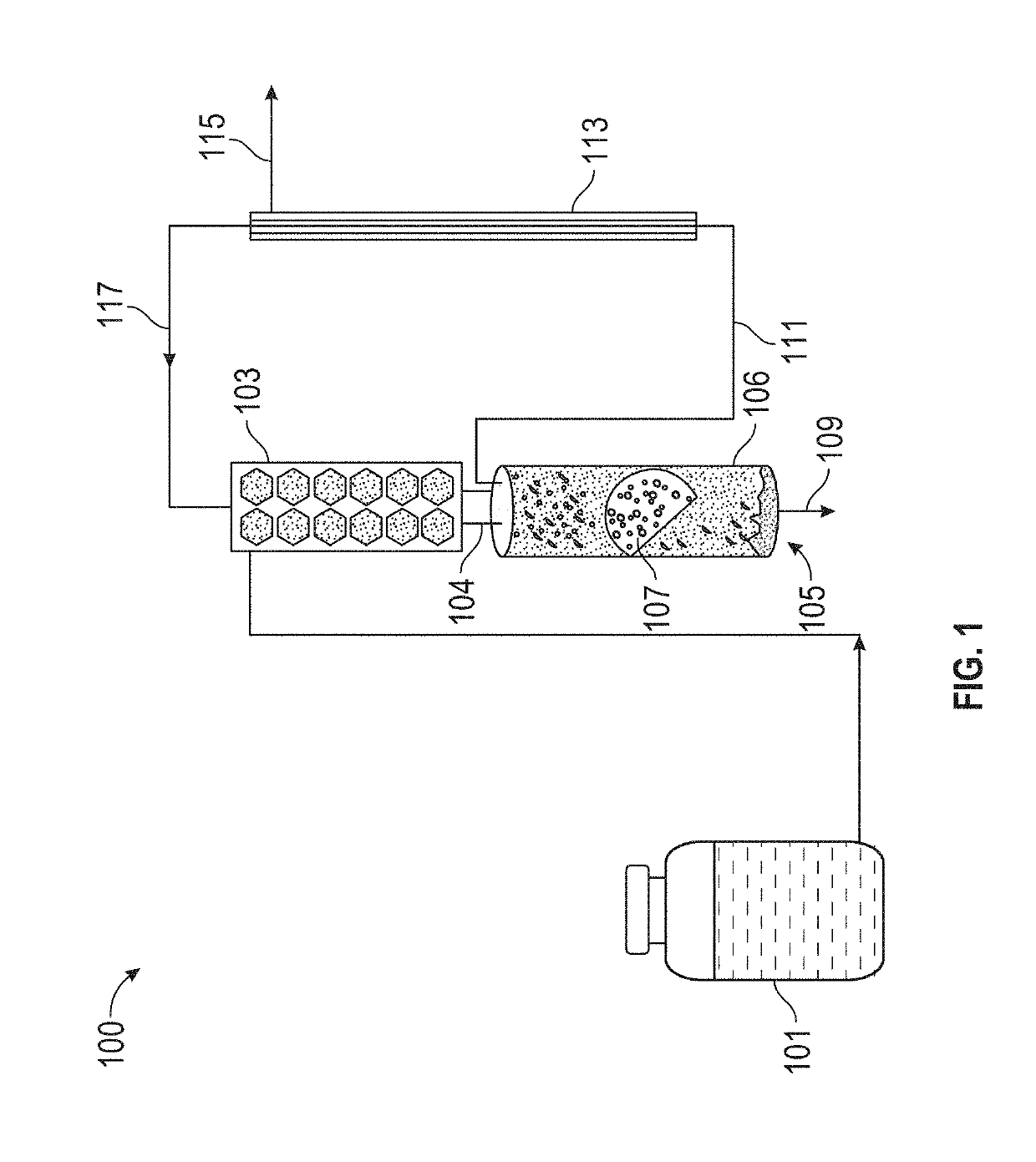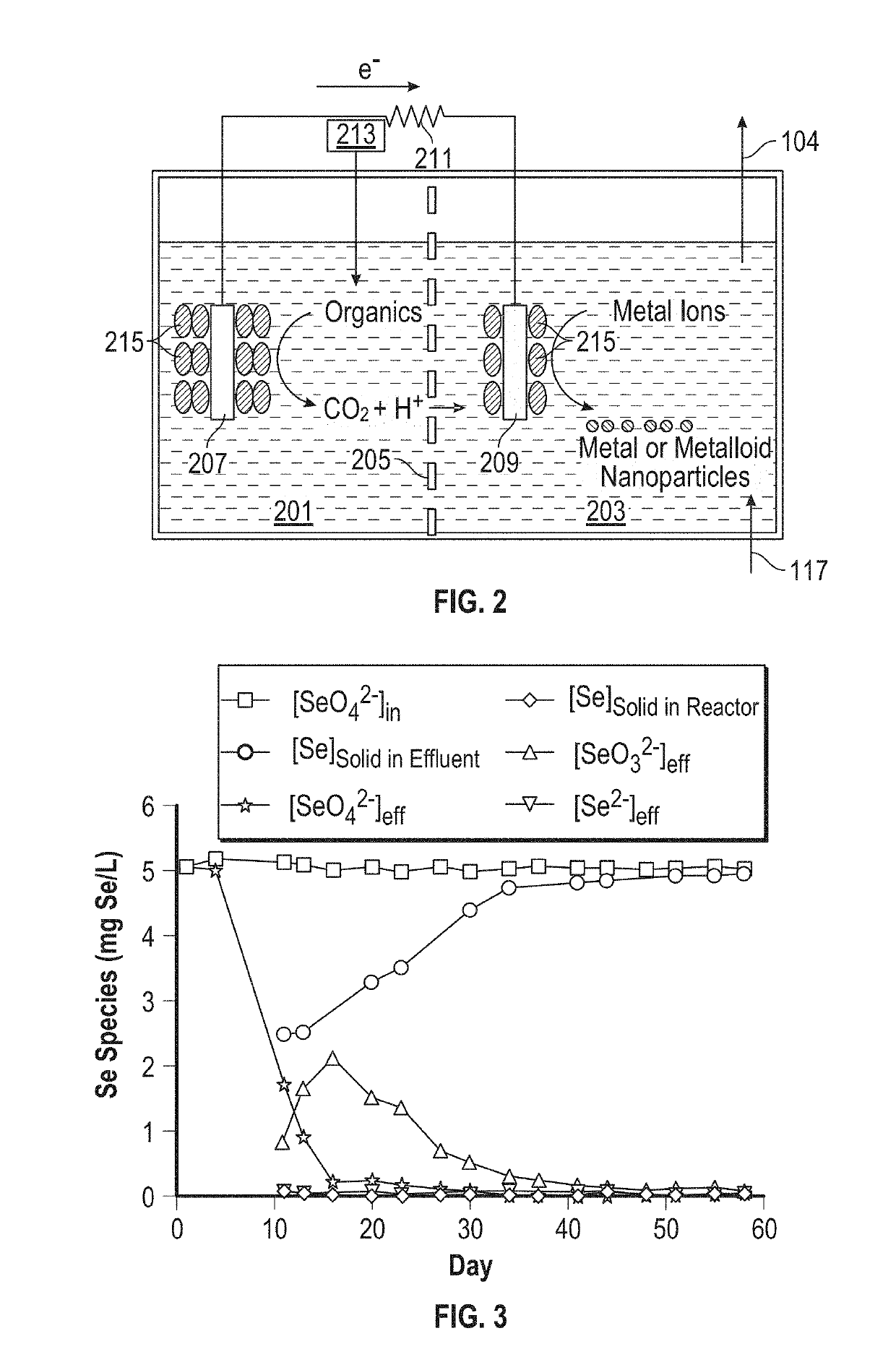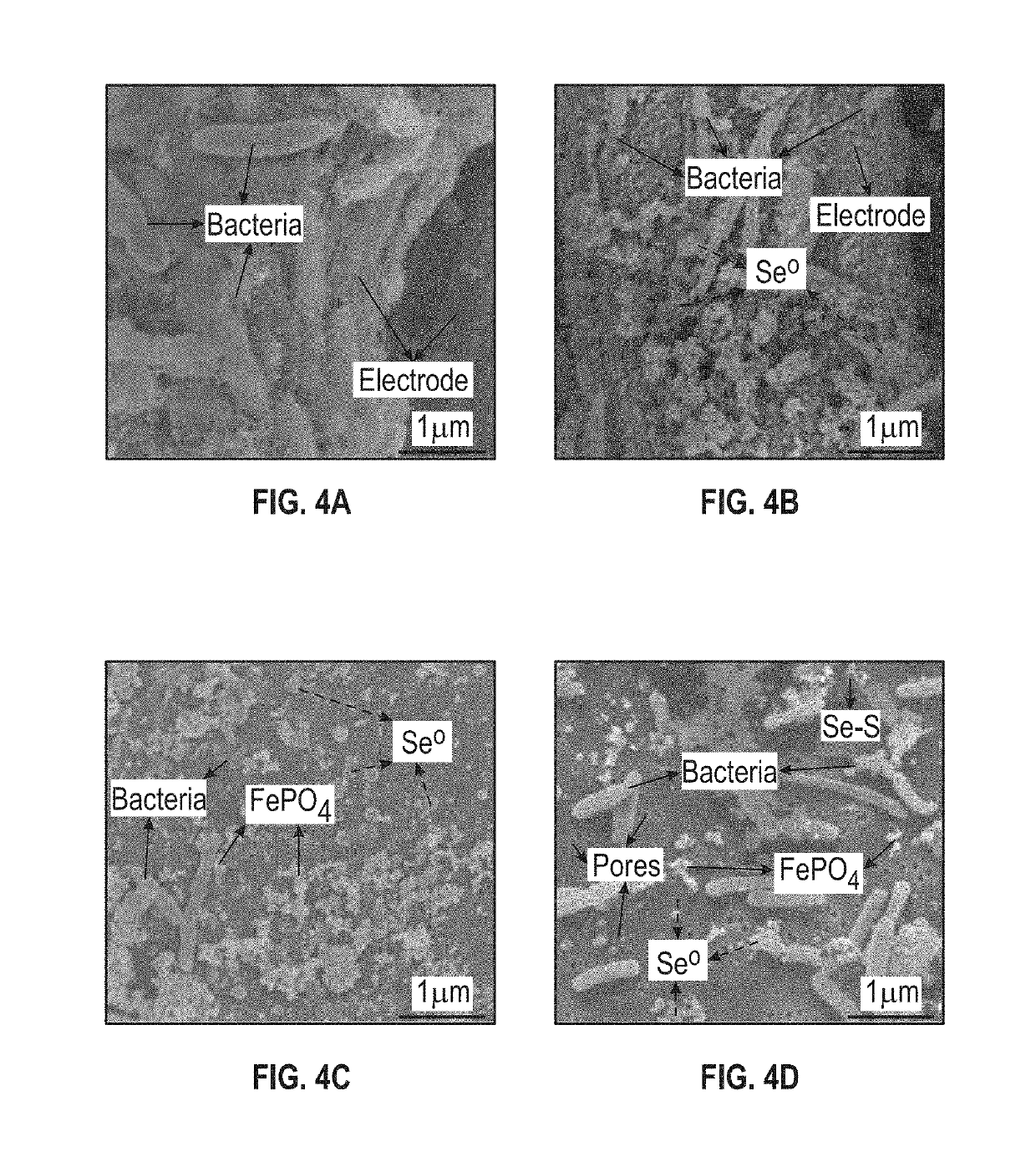Reactors and methods for producing and recovering extracellular metal or metalloid nanoparticles
a technology of metal or metalloid nanoparticles and reactors, which is applied in the direction of chemistry apparatus and processes, water/sewage treatment by ion exchange, energy-based wastewater treatment, etc., can solve the problems of hair loss and reproductive failure, hair loss and hair loss, and metal and metallloid ion contamination as a potential health hazard
- Summary
- Abstract
- Description
- Claims
- Application Information
AI Technical Summary
Benefits of technology
Problems solved by technology
Method used
Image
Examples
example 1
of Selenate in a Bioelectrochemical Reactor
[0058]Reduction of selenate (SeO42−) in selenate-contaminated water to extracellular elemental selenium nanoparticles in a continuous-flow cathode-based bioelectrochemical reactor fed with acetate as the electron donor was investigated. The following methods demonstrated that selenate in selenate-contaminated water was rapidly reduced with high yield and excellent efficiency.
[0059]1. Cathode-Based Bioelectrochemical Reactor Setup
[0060]A two-chamber bioelectrochemical reactor (Adams & Chittenden Scientific Glass, USA) was set up in an anaerobic box that was continuously supplied with ultra-high purity nitrogen gas (Airgas, USA). The anaerobic anode and cathode chambers in the bioelectrochemical reactor were separated by a cation exchange membrane (CEM, model CMI-7000, Membranes International Inc., USA). Each chamber had a liquid volume of 290 mL and headspace of 60 mL. A plain carbon cloth electrode (2.5 cm×6 cm, Fuel Cell Store, USA) was us...
example 2
ization of the Solids Produced in the Bioelectrochemical Reactor
[0073]To characterize the solid selenium and sulfur species of Example 1, and their interaction with the microorganisms, a few solid samples were taken from the bioelectrochemical reactor at the end of the experiments. The samples included the anode and cathode electrodes, the cation exchange membrane, pieces of nuclepore track-etched membranes placed at the bottom of chambers for collecting precipitates, and the retentate collected by filtering the effluent through a membrane (nuclepore track-etched membranes). Control samples were taken before the experiments were conducted.
[0074]The majority of selenium solids were found in the effluent instead of the reactor with the majority of the solid selenium found as elemental selenium nanoparticles suspended in the liquid.
[0075]All samples were assayed using Raman spectroscopy, Scanning Electron Microscope (SEM, FEI Nova 400 Nano SEM, FEI, USA), and Energy Dispersive X-Ray (E...
example 3
ization of the Bioelectrochemical Reactor Performance
[0089]The electrochemical characteristics of the reactor during the reduction of selenate in selenate-contaminated water to extracellular elemental selenium nanoparticles in a continuous-flow cathode-based bioelectrochemical reactor fed with acetate as the electron donor was investigated.
[0090]1. Characterization of the Current and Voltage in the Bioelectrochemical Reactor
[0091]The voltage across the 100Ω external resistance and the current in the bioelectrochemical reactor was calculated by Equation 1. As seen in FIG. 8A, the current and voltage gradually increased until reaching the maximum of ˜274 μA and ˜0.027 V at steady state. The current and voltage increase corresponded very well with the SeO42− removal increase seen in FIG. 3.
[0092]To understand what factors affect the current and how to maximize the current and current density, the current at steady state was also characterized by Equation 5 as follows:
I=OCV-URint=0.181V...
PUM
 Login to View More
Login to View More Abstract
Description
Claims
Application Information
 Login to View More
Login to View More - R&D
- Intellectual Property
- Life Sciences
- Materials
- Tech Scout
- Unparalleled Data Quality
- Higher Quality Content
- 60% Fewer Hallucinations
Browse by: Latest US Patents, China's latest patents, Technical Efficacy Thesaurus, Application Domain, Technology Topic, Popular Technical Reports.
© 2025 PatSnap. All rights reserved.Legal|Privacy policy|Modern Slavery Act Transparency Statement|Sitemap|About US| Contact US: help@patsnap.com



